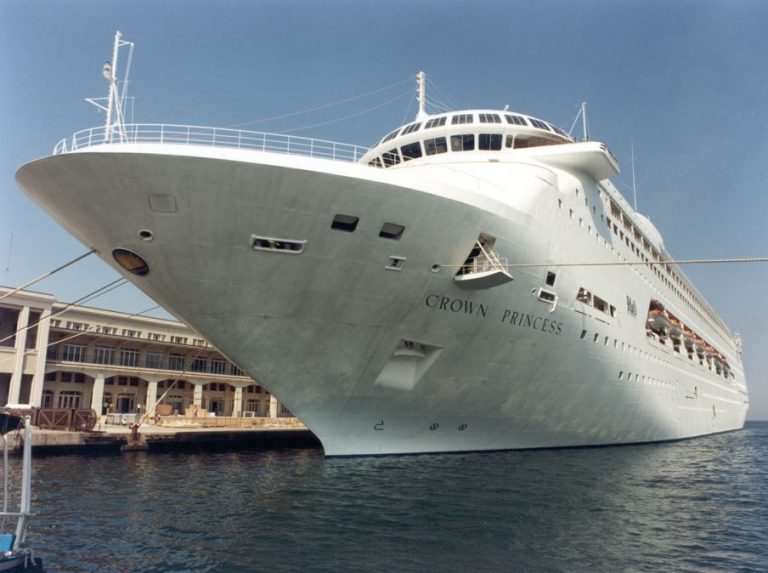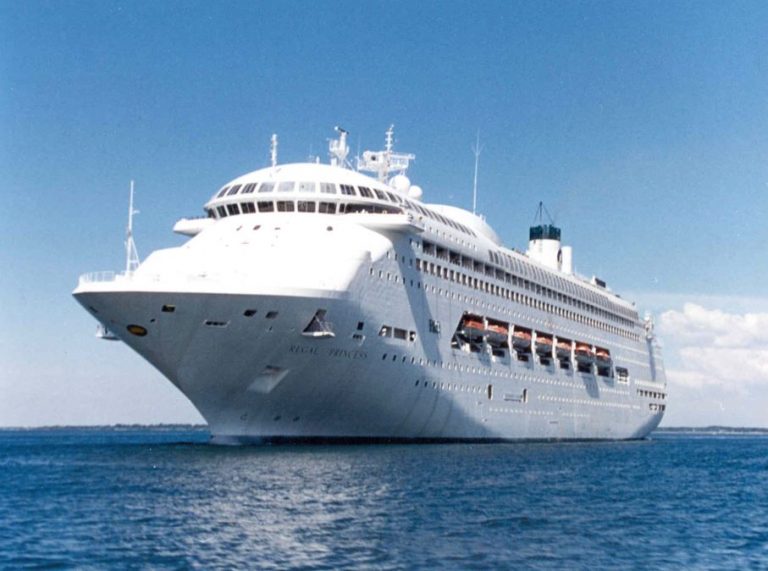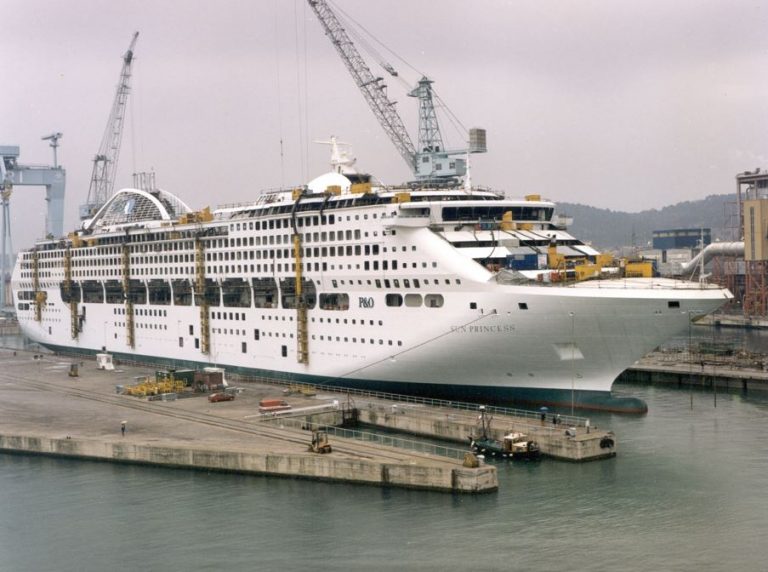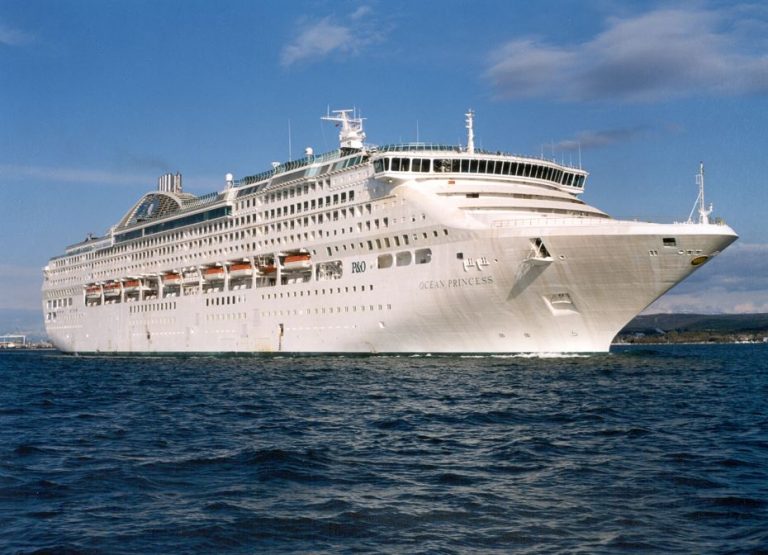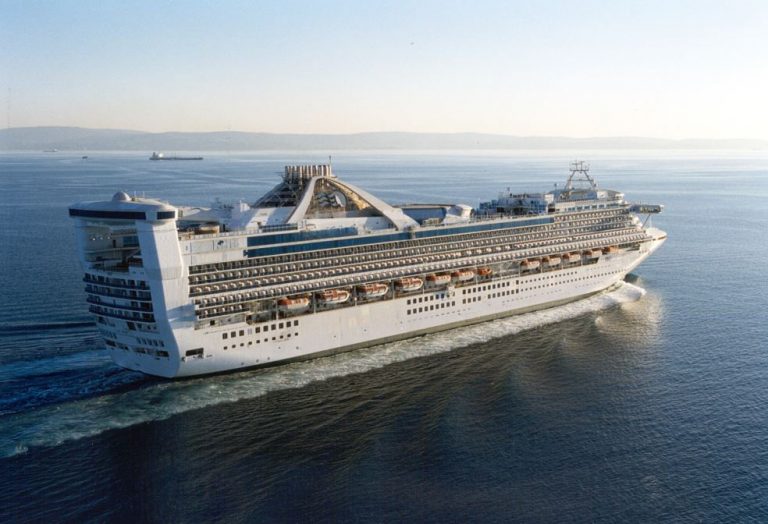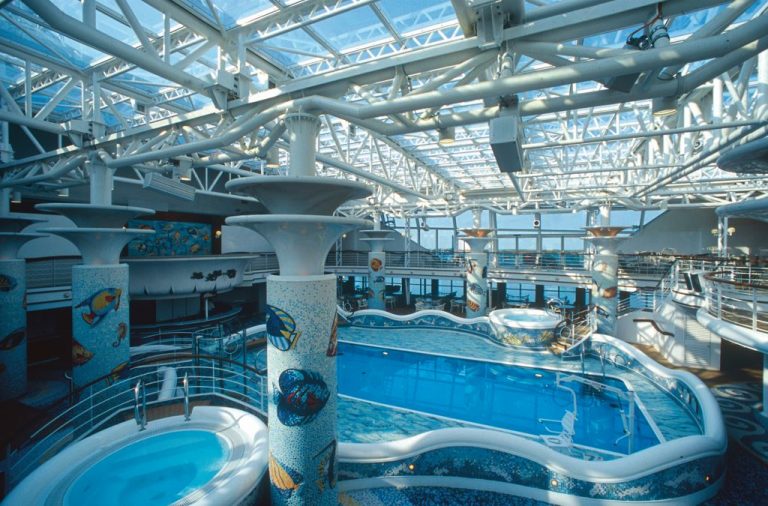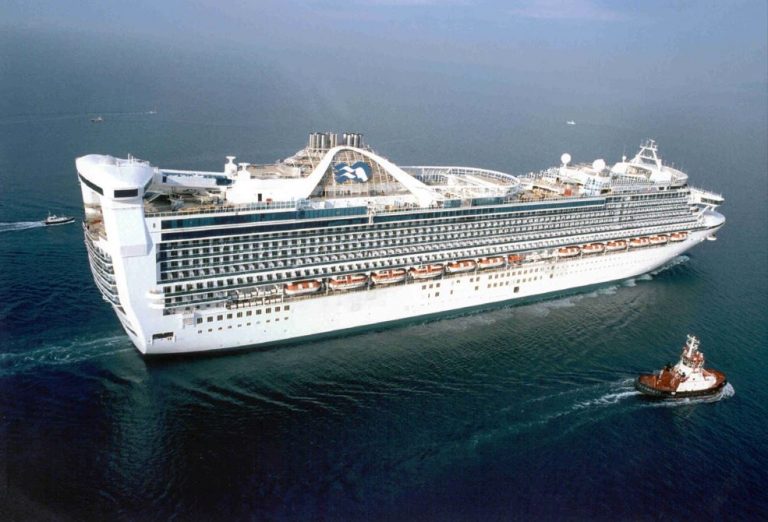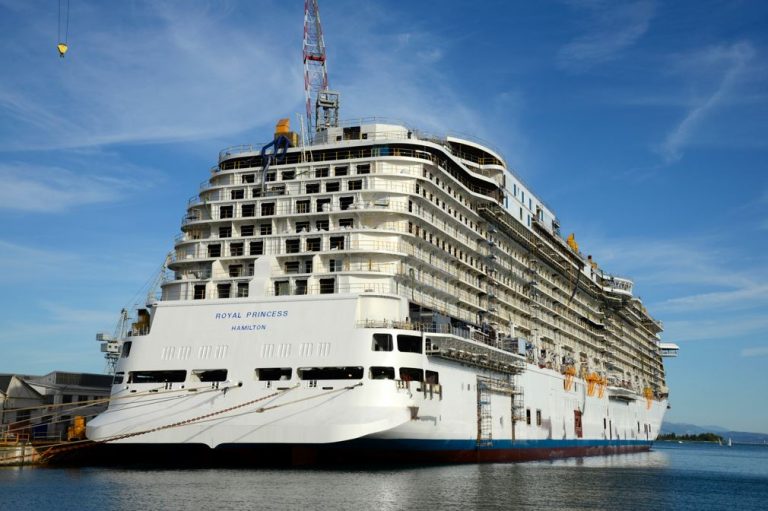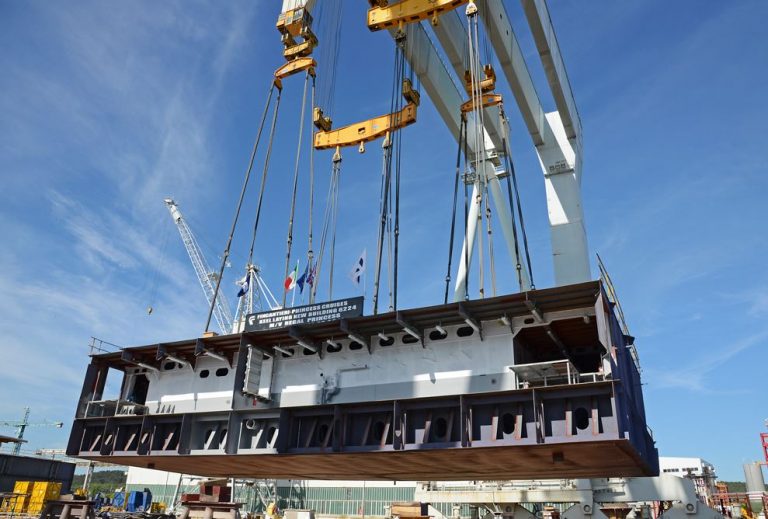From Crown Princess to Sun Princess
The evolution of naval technology and current trends in the cruise industry through the example of Princess Cruises‘ classes. A story that starts from afar and spans our days with upcoming deliveries and new projects.
With the upcoming delivery of the new Sun Princess prototype of the “Sphere” class, the first dual-fuel cruise ship built by Fincantieri, scheduled for early 2024, it’s worth revisiting the history of the relationship between Princess Cruises and the Trieste-based company. This will be the twentieth passenger ship built by Fincantieri for the renowned US premium brand in nearly 35 years.
The historic partnership between the two companies began in 1988 with P&O’s acquisition (which controlled Princess) of Sitmar Cruises. Sitmar had ordered the first two new cruise ships of the new generation from Fincantieri in late 1985. P&O decided to transfer the entire Sitmar fleet to Princess, including the new orders. We are talking about a 63,000 gross tonnage ship ordered from Chantiers de l’Atlantique and two “Monfalcone” ships of 70,000 gross tonnage. P&O’s first move, along with Fincantieri, was to revise the original design by enlisting the famous architect Renzo Piano to modify the exterior lines. Piano drew inspiration from the silhouette of a dolphin to modify the ship’s design originally conceived by Engineer Gianfranco Bertaglia.
Crown Princess 1990
Regal Princess 1991
The two ships, built in Monfalcone, were named Crown Princess and Regal Princess and were delivered on June 29, 1990, and July 22, 1991, respectively. A memorable celebration took place at the Maritime Station in Trieste for the completion of the first ship, which marked Fincantieri’s grand return to the cruise ship construction market.
Officially, however, these two ships had been commissioned by the company Astramar from Palermo. In reality, Astramar was a fictitious company created specifically to obtain financing provided by the Italian government to shipowners in the southern regions. To promote shipping activities in southern Italy, the government guaranteed a subsidy of 11% of the unit’s cost for each ship registered in a maritime district in the southern part of the country, provided that 30% of the crew were of Italian nationality and residing in the South. This is why these two units left Monfalcone with “Palermo” written on their stern; later, shortly after the official delivery, these units would be registered in Monrovia to benefit from the fiscal advantages of “flag of convenience.”
Sun Princess 1995
This process also occurred for the subsequent Princess order assigned to the Monfalcone shipyard, namely the first Sun Princess delivered on November 10, 1995. This new prototype, upon entering service, was the largest passenger ship in the world with 77,441 gross tonnage. This ship immediately became famous as it became the set for the sequel “Love Boat – The Next Wave” during those years. Princess was heavily capitalizing on the popularity of the TV show “Love Boat” (aired from 1977 to 1986) to promote its brand.
The second ship of the “Sun” class was delivered on April 18, 1997, in the presence of the then Prime Minister Romano Prodi, in Monfalcone. This ship, the Dawn Princess, also immediately became a television set in Alaska for the final episodes of the Baywatch series.
Dawn Princess 1997
However, the pinnacle of the Fincantieri-Princess Cruises partnership was reached the following year with the delivery of the Grand Princess. With a gross tonnage of 108,806, it broke the world record for the largest ship held for two years by the Carnival Destiny (also built in Monfalcone). Its design was highly innovative, featuring a galleon-shaped stern with a spoiler on top that housed the discotheque. The ship was delivered on May 20, 1998, a few weeks behind schedule due to a problem with the propeller shaft bearings that emerged during sea trials. Nonetheless, the media coverage of the event was significant, largely due to the fact that a few months earlier, James Cameron’s blockbuster film “Titanic” had been released in cinemas.
In 1998, the third ship of the “Sun” class, the Sea Princess, was also delivered, followed by the fourth, the Ocean Princess, in 2000.
Sea Princess 1998
Ocean Princess 2000
The new millennium continued at Monfalcone with the first two repeats of the “Grand” class, the Golden Princess (delivered in April 2001) and the Star Princess (delivered in January 2002). This latter event was celebrated with the presence of the then President of the Republic, Carlo Azeglio Ciampi, in the shipyard, who also witnessed the ship’s baptism, which exceptionally took place at the pier of the Isontino plant.
During those years, however, P&O entered agreements for new orders with other shipbuilding groups as part of a strategy to diversify industrial partnerships. This somewhat loosened the relationship with Fincantieri, while two Panamax ships of 90,000 gross tonnage were commissioned from Chantiers de l’Atlantique and two “Grand” class ships from Mitsubishi. However, these orders had a very troubled production process (especially for the “Japanese” ships), which led P&O to strengthen ties with Fincantieri.
Star Princess 2002
Golden Princess 2001
This resulted in the Caribbean Princess, a new ship of the “Grand” class, built in Monfalcone with an additional entire deck of cabins. This solution, which provided a significant commercial advantage for the shipowner, was achieved by making the last two decks in aluminum instead of one in steel (which has a specific weight three times higher than that of the lightweight alloy). This daring technological solution was a success for Fincantieri, which also introduced the company’s first “Movies Under the Stars” screen on this ship, a feature that has since become one of its trademarks.
In the meantime, the P&O group was acquired by Carnival Corporation in April 2003, so when the “Caribbean” was delivered (March 19, 2004), it became the first Princess Cruises ship to join the fleet after the birth of the new cruise giant.
Caribbean Princess 2004
Given the close partnership between Carnival and Fincantieri, the construction of additional “Grand” class ships continued at Monfalcone. The project was further improved by redistributing the weights. The discotheque was moved behind the funnel, and only one aluminum deck was built instead of the two on the previous ship. This led to the construction of the second Crown Princess (delivered in May 2006), the Emerald Princess (delivered in March 2007), and finally the Ruby Princess (delivered in October 2008).
Unfortunately, with the economic crisis of 2008, further orders were frozen, and an extended version of the “Ruby,” which had already been optioned, was canceled (construction 6199).
However, the relationship with the shipowner was never interrupted, and while waiting for better times, Fincantieri began designing a new prototype according to SOLAS (Safety of Life at Sea) “Safe Return to Port” rules. After a heated battle with Meyer Werft, this order was also secured in 2010, a time when new ship orders were few and far between. This new order for two ships with a gross tonnage of 142,000 allowed Fincantieri to regain ground and begin a climb that continues to this day.
Ruby Princess 2008
The first of these two ships, the Royal Princess, was delivered on May 31, 2013. This ship represented a more technologically advanced generation. In addition to being the first Fincantieri “Safe Return to Port” ship, this project marked a significant step forward in energy saving, with lower installed power compared to previous ships and consequent significant fuel savings for the shipowner. Furthermore, the “Royal” is the first ship in the fleet to be equipped with seven trumpets on the funnel that can play the American theme of “Love Boat.” As a result, the horns of these ships stand out in ports around the world. Fincantieri had already tried this solution for the horns of the two Disney ships built in Marghera in the late 1990s.
The second unit of the “Royal” class, the new Regal Princess, was delivered on May 15, 2014, with several improvements over the prototype (for example, slightly higher funnel exhaust conduits to prevent soot from falling on passenger decks).
Royal Princess 2013
In 2015, the partnership between Fincantieri and Princess also extended to the refitting sector. In fact, the Island Princess (built by Chantiers de l’Atlantique) arrived in Trieste at ATSM to undergo significant updating. Several public areas were refurbished, a side was opened to change an alternator, a scrubber was installed, and several cabins were added, significantly altering the ship’s stern.
In the same year, in July, the third ship of the “Royal” class was laid down in Monfalcone. This ship also represented a milestone for Fincantieri. It was the company’s first ship for the promising Chinese market. Thus, different solutions were adopted in the hotel area to suit the tastes of Eastern cruisers. This included larger shopping areas, a casino doubled in size, a fully covered pool, and many other small details. This ship was named Majestic Princess and became the first ship in the fleet to feature the new stylized “princess” artwork on its bow during its technical launch (February 8, 2016).
Shortly after, the Royal Princess arrived in the dry dock in Palermo and was painted with the new livery that would gradually be applied to all ships already in operation in the fleet.
Regal Princess 2014
“Majestic,” with 144,216 gross tonnage, was, at the time of its delivery on March 30, 2017, the largest ship ever built in an Italian shipyard (a record broken a few months later by MSC Seaside).
The rest is recent history, with three more ships of the “Royal” class delivered: Sky Princess (2019), Enchanted Princess (2020), and Discovery Princess (2022). The last two were completed despite the difficulties caused by the pandemic that erupted at the beginning of 2020, which had slowed down shipyard activities worldwide. It’s worth noting that these last three ships have a half-deck more at the bow, which has increased the number of available cabins.
Now, the future is represented by the new Sun Princess, which, at over 175,000 gross tonnage, will be the largest cruise ship ever built in Italy and, as previously mentioned, the first to be powered by LNG. It will be followed in 2025 by its sister ship, named Star Princess, following the company’s tradition of baptizing new builds with the names of decommissioned units.”
Don’t miss updates, news and reviews on the world of cruises on Cruising Journal.

